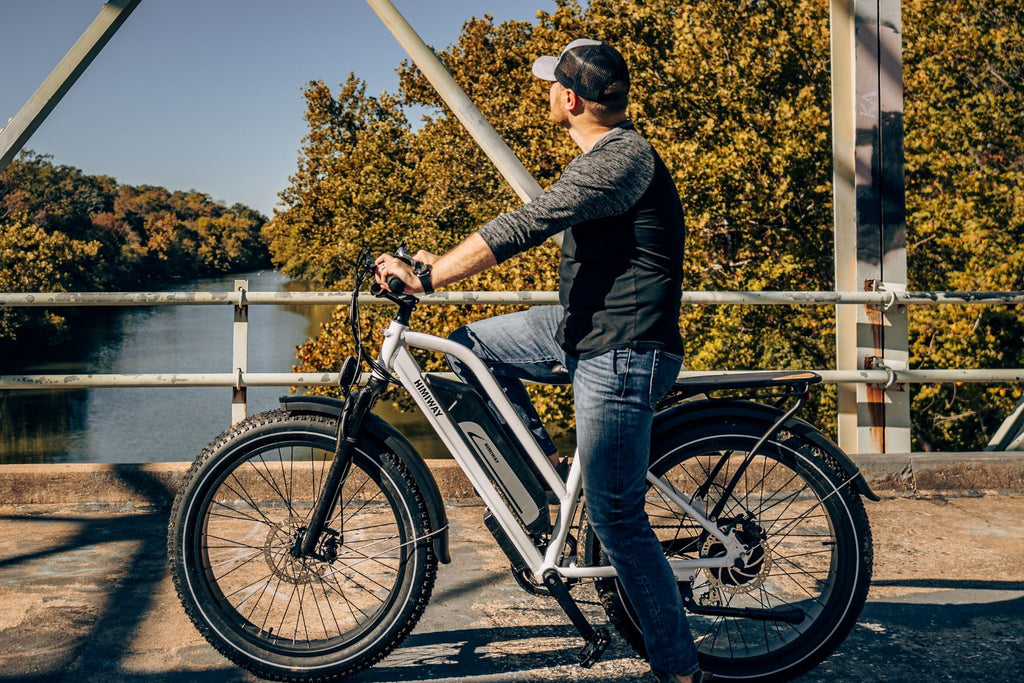Electric bikes improve how we travel by providing a convenient, environmentally sustainable mode of transportation. These motor-running ebikes are popular because rechargeable batteries power them. However, because recent battery fires in New York City have raised worries about their safe use, it is critical to recognize the potential risks associated with electric batteries.
In one example, a malfunctioning charger led a battery to overheat, resulting in a fire that damaged the e-bike and the neighboring property. In this article, we will go over everything you need to know about electric batteries, as well as frequent mistakes and advice for using your electric bike safely
Basics Of E-Bike Batteries
Electric bikes are everywhere, especially in urban areas, due to their practical and easy mode of transportation. It is easy for you to move about with an electric bike. With its cost-effectiveness, you don't need to worry about fueling or buying gas.
The importance of electric bike batteries should be emphasized. An electric bike without a battery is seen as just a mere bike. Some of the important ones include:
It powers the bike:
An electric bike without a battery won't be considered an electric bike. Yes, it won't. The battery serves as the heart of any bike. Just as we can relate to humans, is a man without a heart considered dead properly? So it is for an electric bike. The battery powers the whole functionality of the bike. Without a battery, the motor won't work.
It enhances performance:
The battery in an electric bike enhances how it performs. If you want to use the pedal assist, you will need a battery to power the bike. With the battery in your electric bike, you are assured that it provides sufficient power to move across rugged terrain.
Types Of An Electric Bike Battery
Different types of batteries are used to power an electric bike, but the one used in an Himiway ebike is the lithium-ion battery.
Lead-acid battery:
A lead-acid is a type of battery that you can often find in some electric bikes. The battery has existed for a long time, and you can only see it in an old model of any electric bike. They are considered the heaviest of all electric bike batteries and have low capacity. They also have a lower power output. The advantage of the lead-acid battery is that it is inexpensive and straightforward to recycle.
Lithium-ion battery:
The lithium-ion battery is widespread in new electric bike models. They are known for their high energy density, and The battery is used in any Himiway ebike model because it is durable and last longer.
The Himiway electric bike, like the Electric City Commuter Bike Rambler, has a Samsung lithium-ion battery of 48V 15Ah with 21% higher density and 21,600 cells, which enables you to enjoy a more extended journey of up to 55 miles. Its integrated design significantly reduces the risk of short circuits and wetting issues, ensuring a safe and reliable riding experience.
Working Principles Of A Lithium-Ion Battery
Understanding the principle of the battery in your electric bike is essential for you to comprehend its functionality. The lithium-ion battery's working principle is the passage of lithium-ions between the positive and negative electrodes through an electrolyte during charging and discharging. When you are charging, the lithium ions are stored in the negative electrode while discharging releases them, which create electrical energy for your bike. This reversible process allows numerous charging cycles and safety features like a battery management system that protects your battery from potential hazards.

Common Mistakes In E-Bike Battery Usage
As much as there are ways to prolong your battery life, some mistakes can also damage your battery life and reduce the lifespan of it. Some of the common mistakes you should always avoid are:
Overcharging:
Leaving your electric bike battery plugged in for longer hours can damage your battery, reducing the battery life. It can also cause overheating. Instead of your battery to last you for hours during riding, it won't.
Overdischarging happens when your battery is discharged beyond its recommended lower voltage limit. When you use your electric bike battery to its lowest level, you destroy your battery cell, reducing the battery's capacity and overall performance.
Incorrect chargers and charging method:
Most bike riders don’t pay much attention to the ebike charger they use when charging. Some want their battery to charge irrespective of the charger type and compatibility. However, using the wrong ebike charger when charging can damage the battery or prolong the charging time. If you are not using the proper method to charge or using, you can also reduce your bike's overall performance.
Impact of environmental temperature:
The environment's temperature considerably impacts how an ebike battery operates and should not be ignored as a common mistake in battery usage. Extreme temperatures, whether too hot or cold, can reduce a battery's capacity, efficiency, and longevity.
Improper maintenance and care:
Improper maintenance and care is also a typical mistake in ebike battery usage that can substantially impact your battery's performance, longevity, and overall efficiency. Neglecting essential maintenance methods can lead to increased battery degradation and significant safety issues. If you are being careless and you don't maintain or care about your bike battery, it won't last.
Recommendation For Safety Use Of E-Bikes Battery
The safety and strength of your battery depends on you. If you want your electric bike battery to last longer, there are a few steps you should consider.
Using an adequate charger and charging method:
Ensure that when you want to charge your bike battery, use the recommended charger with your bike. A power cable is attached to the bike that you can use to charge the battery. It has the correct voltage to keep your battery in the right shape. These ebike chargers are designed for the battery's voltage and current requirements, ensuring safe and efficient charging. If your charger eventually gets spoilt, do not go to any random store to get a new one. Always get back to your bike's manufacturer for a replacement.
Before you charge the battery, ensure you know the right way to go about it. The recommended way to charge is to plug the charger into the socket and then insert it into your battery.
Avoid overcharging and over-discharging:
To maintain the safety of your battery, always avoid overcharging. Always keep an eye when charging for it being overcharged. Once the battery is fully charged, unplug the charger immediately. Leaving the charger plugged for so long could cause overheating, eventually leading to fire outbreaks.
You don't need to use the battery to its lowest level. If you are the type that drains the battery till it is dead, you need to understand that your battery can get damaged during the process.
Consider environmental and storage conditions:
The weather can determine how effective your battery will last. You need to know how to maintain your battery in different weather conditions. Keep the battery at room temperature before using it in cold conditions. Considering the environment during the ride will help it work better and avoid unexpected decreases in capacity. Avoid rapid charging in hot conditions because it generates more heat and may lead to thermal issues. Charge the battery slowly to prevent heat buildup.
If you are not using your bike for some time, store it in a cool and dry place, especially from direct sun or extreme temperatures. The battery should be kept from freezing conditions for some time. If you follow all these recommendations, you won't have any issues with your battery's lifespan.
Regular inspection and maintenance of batteries:
Regular inspection helps monitor your battery's overall performance. You can easily detect any sign of damage, leak, or corrosion, which can help avoid any hazards or accidents during a ride. Ensure you do a regular inspection regularly for your bike for you to have an enjoyable experience and performance when riding.
If dirt accumulates on the battery exterior, it can hinder heat dissipation, leading to overheating when charging. You must clean the battery surface regularly to ensure better heat management and safe operation.
Not using outdated or damaged batteries:
Batteries may have a period when they will be outdated. Therefore, it’s advisable to know when to get a replacement battery. You need to know if your battery is seen as an updated battery. An outdated battery can lead to reduced capacity and a shorter riding range. They become less stable and malfunction, leading to hazards when charging or riding. To know if your battery is outdated or not, reach out to the manufacturer and request the battery's specifications for your electric bike model.
A damaged battery can cause leaks which may lead to corrosion or liquids coming out, affecting the bike component. If your battery is damaged, contact an expert to help you with another.
Choosing a reliable brand and quality assurance when purchasing ebikes:
When purchasing an electric bike from a reputable manufacturer, you are assured that their products and the bike component are top-notch. A reliable brand will invest their time and money to use advanced technologies to build their bikes, especially their battery.
A recommended choice is the Himiway electric bike. They are considered a tested and trusted manufacturer of any electric bike with durable batteries, which generally improve your bike's quality and performance if you buy from them.
Emergency Handling And Preventive Measures
Preventive measures are required to avoid accidents or emergencies. However, in case of any emergency, there are certain things you should avoid to prevent damage to you or your bike.
Dealing with an ebike battery fire incident:
During an electric bike fire incident, there are appropriate actions you must follow to ensure safety and also minimize damage. In case of any fire or smoke due to overheating of the battery, the first thing to do is to distance yourself from the fire and find a way to turn it off. If it is a bit fire, you could use a wet cloth to turn it off, and if it gets more extensive, use a fire extinguisher. It would help if you had a little-size fire extinguisher in case of an emergency.
Emergency evacuation and reporting procedures:
If your electric bike battery causes a fire outbreak and is out of your control, inform the nearby people about the situation to evacuate the area. Report the issues to the proper emergency services and provide them with the location and condition of the fire.
Fire prevention methods and selection of effective fire extinguishers:
Regular battery maintenance, safe storage, and appropriate charging procedures can prevent E-bike battery fires. Use fire extinguishers made exclusively for electrical fires instead of using water to put out battery fires. Ensure the extinguisher you choose has a sufficient rating for potential fires by being familiar with the various varieties and their purposes. Consider taking a fire safety course to learn how to efficiently and safely use a fire extinguisher. It is essential to prioritize safety and proper e-bike battery usage to avoid accidents, safeguard ourselves, and safeguard the environment.

Conclusion
Understanding that e-bike batteries can pose safety issues if mishandled or damaged is crucial. To provide a secure and joyful riding experience, safety in using e-bike batteries must come first. Keep batteries charged, stored, and maintained according to the manufacturer's instructions to ensure safety. In addition to protecting you while riding, preventative actions and responsible battery usage habits can help create a more sustainable and greener world. The Himiway ebike is ideal if you want a dependable electric bike with long-lasting batteries.














































